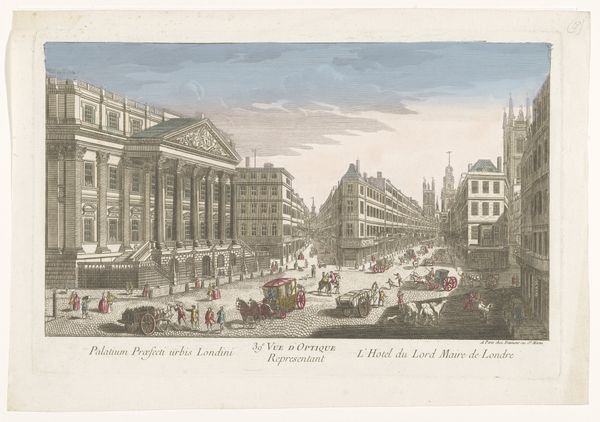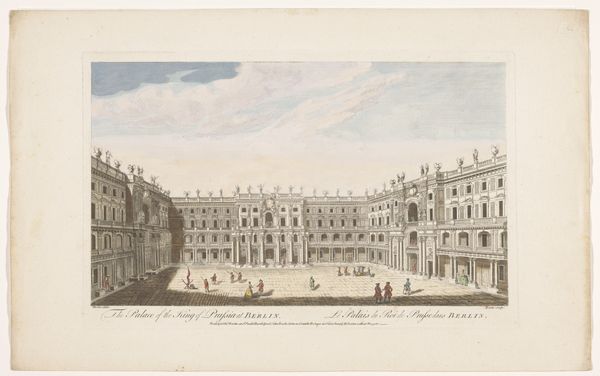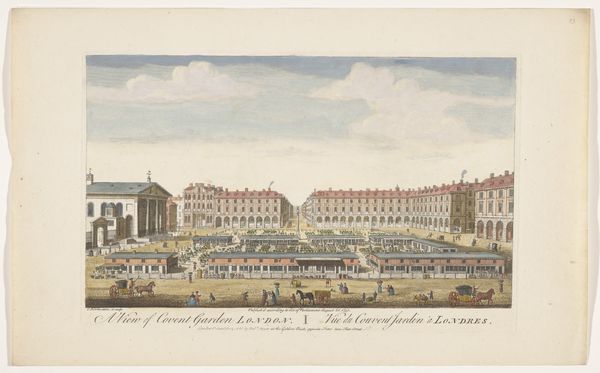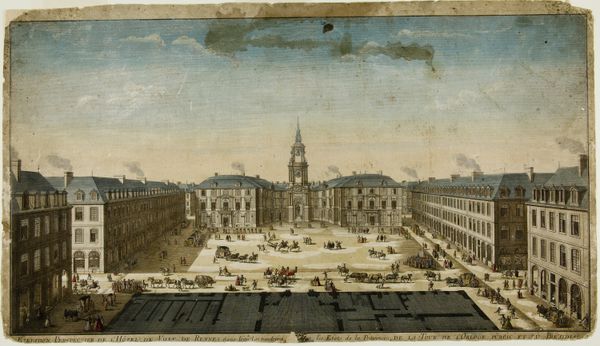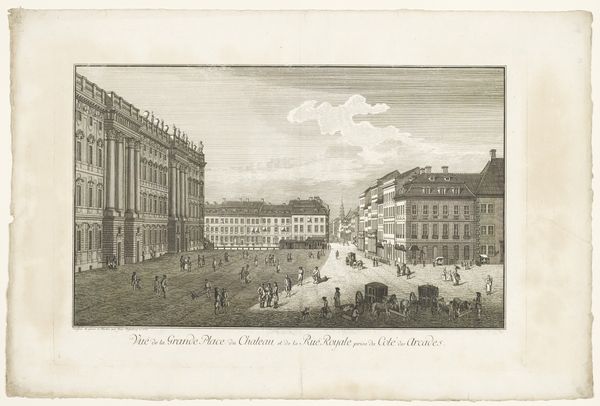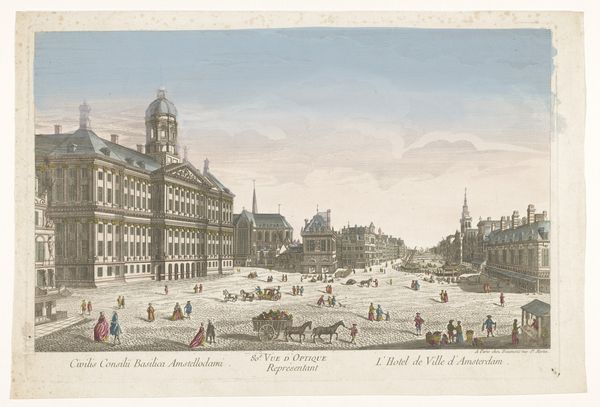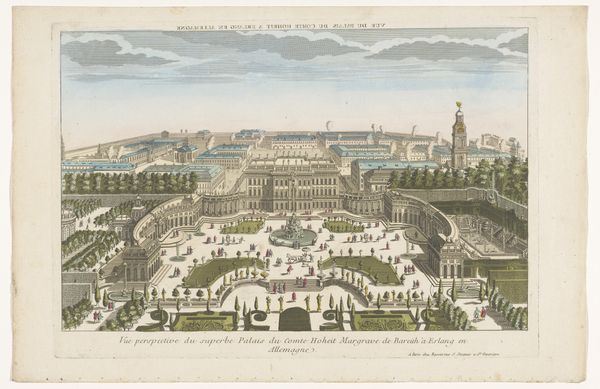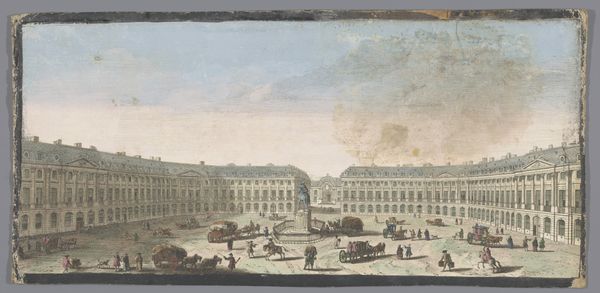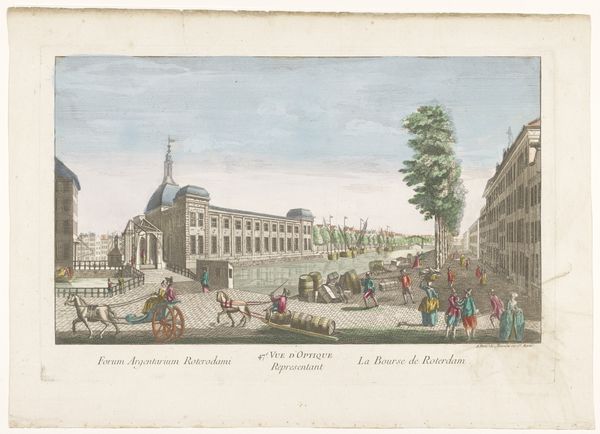
Gezicht op een keizerlijk paleis in een buitenwijk te Wenen 1745 - 1775
0:00
0:00
jeanfrancoisdaumont
Rijksmuseum
painting, watercolor
#
baroque
#
painting
#
perspective
#
watercolor
#
intimism
#
cityscape
#
watercolour illustration
#
genre-painting
#
history-painting
#
rococo
Dimensions: height 297 mm, width 432 mm
Copyright: Rijks Museum: Open Domain
Curator: It has such a pristine, almost dollhouse quality. It’s a beautifully rendered watercolor illustration. Editor: Indeed! This work, created between 1745 and 1775, offers us “Gezicht op een keizerlijk paleis in een buitenwijk te Wenen”—A View of an Imperial Palace in a suburb of Vienna—courtesy of Jean-François Daumont. The piece employs Rococo stylistic elements, but given the palace grounds and subject, it speaks to Baroque sensibilities as well. Curator: Rococo trying to be Baroque… That would explain why the figures feel somewhat dwarfed by the architecture, all pastel prettiness bending under the weight of historical importance. You feel like you should almost curtsy as you look at it. Editor: Precisely! Consider how pieces like this functioned. Prints and watercolors like Daumont’s played a crucial role in circulating imagery of power. Before photography, these picturesque views helped shape public perceptions of royalty and the urban spaces they inhabited, further entrenching existing hierarchies. Curator: It feels intentionally staged, doesn’t it? Like Marie Antoinette playing milkmaid. Everyone in their designated roles. Makes you wonder what went on behind those perfect facades! Were those ladies gossiping or plotting? Were those horses even properly house-trained? Editor: Absolutely. It presents an ideal, not necessarily a reality. The wide boulevard is carefully manicured, the people elegantly dressed, yet what about the lives of ordinary Viennese outside the palace walls? It raises questions about whose stories are deemed worthy of representation and preservation. Curator: But there is a beauty in that manufactured reality. It feels complete, almost perfect. Even the soft watercolor tones have a slightly nostalgic character, like faded grandeur. There's comfort in the way it pretends to be eternal. Editor: And the way that 'eternity' functions within our present context: offering a curated glimpse into an age defined by rigid societal structure. These carefully rendered views weren't just pretty pictures; they were statements about power, representation, and the carefully constructed image of an empire. Curator: And perhaps, a slightly delicious hint of escapism too. I will hold on to that thought.
Comments
No comments
Be the first to comment and join the conversation on the ultimate creative platform.

